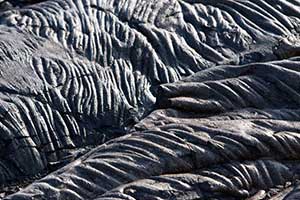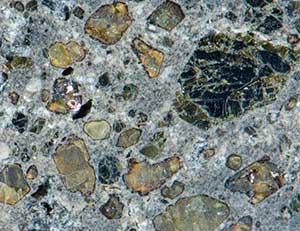Basalt
Basalt is a hard, black volcanic rock with less than about 52 weight percent silica (SiO2). Because of basalt's low silica content, it has a low viscosity (resistance to flow). Therefore, basaltic lava can flow quickly and easily move > 20 km from a vent. The low viscosity typically allows volcanic gases to escape without generating enormous eruption columns. Basaltic lava fountains and fissure eruptions, however, still form explosive fountains hundreds of meters tall. Common minerals in basalt include olivine, pyroxene, and plagioclase. Basalt is erupted at temperatures between 1100 to 1250° C.
Did you know?
- Basalt is the most common rock type in the Earth's crust (the outer 10 to 50 km). In fact, most of the ocean floor is made of basalt.
- Huge outpourings of lava called quot;flood basaltsquot; are found on many continents. The Columbia River basalts, erupted 15 to 17 million years ago, cover most of southeastern Washington and regions of adjacent Oregon and Idaho.
- Basaltic magma is commonly produced by direct melting of the Earth's mantle, the region of the Earth below the outer crust. On continents, the mantle begins at depths of 30 to 50 km.
- Shield volcanoes, such as those that make up the Islands of Hawai`i, are composed almost entirely of basalt.
Copyright © 2003-2008 Calvin & Rosanna Hamilton. All rights reserved.

